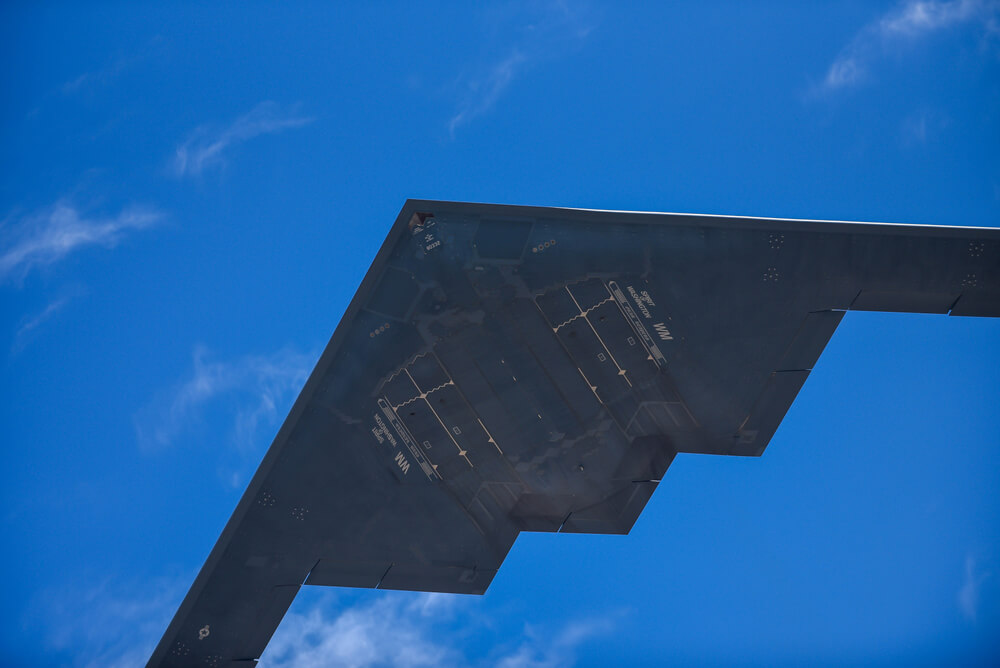On July 4th, the White House hosted pilots from Whiteman Air Force Base following the recent Northrop Grumman B‑2 Spirit mission targeting Iran’s nuclear facilities. While opinions may differ on the mission’s justification, it brought national attention to one of America’s most strategically significant military operations.
Yet beyond the pilots and aircraft is a critical, often overlooked layer of support that needs buttressing: the families, communities and public schools that make mission readiness possible.
Whiteman AFB sits within the Knob Noster School District in north central Missouri—one of the most military-impacted districts in the country. It educates the children of pilots, maintainers, cyber operators and analysts supporting a key asset of the U.S. nuclear triad deterrence mission. But its core infrastructure has not kept pace with that mission’s demands.
The last Department of Defense-funded school in the district—Whiteman Elementary—was built when JFK was president. When the defense community first received the Stealth bomber mission around 1990, Knob Noster High School received modest Department of Defense (DoD) funding for modernization.
Today, the school is outdated – especially considering the school’s decade-long emphasis on science, technology, engineering and mathematics education, even as it delivers nationally recognized academic and workforce development results.
Knob Noster district is vital for Air Force families
In 2015, the Department of Defense Education Activity asked me to support Knob Noster’s efforts to improve outcomes for military-connected students. My role was part of the National Math and Science Initiative’s military families mission and focused exclusively on resourcing and supporting defense communities like Knob Noster all over the country.
At the time, the district ranked near the bottom in Missouri in terms of K-12 education. In 2016, Jerrod Wheeler took over as superintendent, and under his leadership with an initial investment of $400,000 in federal funds, the district rapidly transformed.
By 2019, Knob Noster earned top placement in the Air Force secretary’s education quality rankings for schools surrounding U.S. installations as well as similar accolades by state and national ranking measures.
This turnaround wasn’t accidental—it was the result of strategic leadership, community alignment and a deep commitment to military-connected families.
As Jim Cowen, a nationally recognized education policy expert, wrote in Forbes, military families often move “six to nine times before their kids finish high school.” School quality becomes a top factor in duty station decisions and retention. When schools thrive, families stay. When they don’t, morale and mission focus suffer.
Now, the district is preparing for another wave of change.
School district is growing with new bomber fleet
The Air Force has selected Whiteman as one of the first bases to receive the Northrop Grumman B‑21 Raider, America’s next-generation stealth bomber. Approximately 1,450 additional personnel are expected. The school district anticipates roughly 400 new students as a result—on top of a districtwide enrollment increase of 50 percent over the past decade.
Despite these projections, the Air Force has yet to begin construction on base for the B‑21 fleet and none for the schools. While DoD will fund the operational infrastructure—hangars, training facilities and airfields—the district is left to manage its own military readiness commitment without support.
Knob Noster is moving forward with a plan to construct a $70 million, 150,000-square-foot high school to relieve overcrowding and prepare for future growth. The district is covering the full cost—diverting resources that could otherwise support classroom instruction, counseling or career programs.
A $35 million DoD investment sought by the school district not only reflects a fair and strategic partnership, it would reinforce that education of military-connected children is a core component of mission readiness.
A critical node in national security pipeline
This is not just a local capital project, it is a national defense infrastructure issue.
The district’s programs in aviation, cybersecurity, engineering and robotics are already producing graduates who feed directly into defense-sector jobs. The high school is not just a school—it’s a critical node in the national security pipeline. If we’re investing in next-generation aircraft, we must also invest in developing and retaining the people who operate them.
Over the past decade, I’ve watched this district do everything right. But what’s being asked of them now—without assistance—is unsustainable. If Whiteman is to serve as a cornerstone of 21st-century global strike capabilities, then Knob Noster High School must be strengthened as its educational counterpart.
Let us not educate the children of tomorrow’s warfighters in yesterday’s classrooms. Let us match our investments in stealth hardware with equal care for the people that make mission success possible.
Let us finish the mission—at home.







